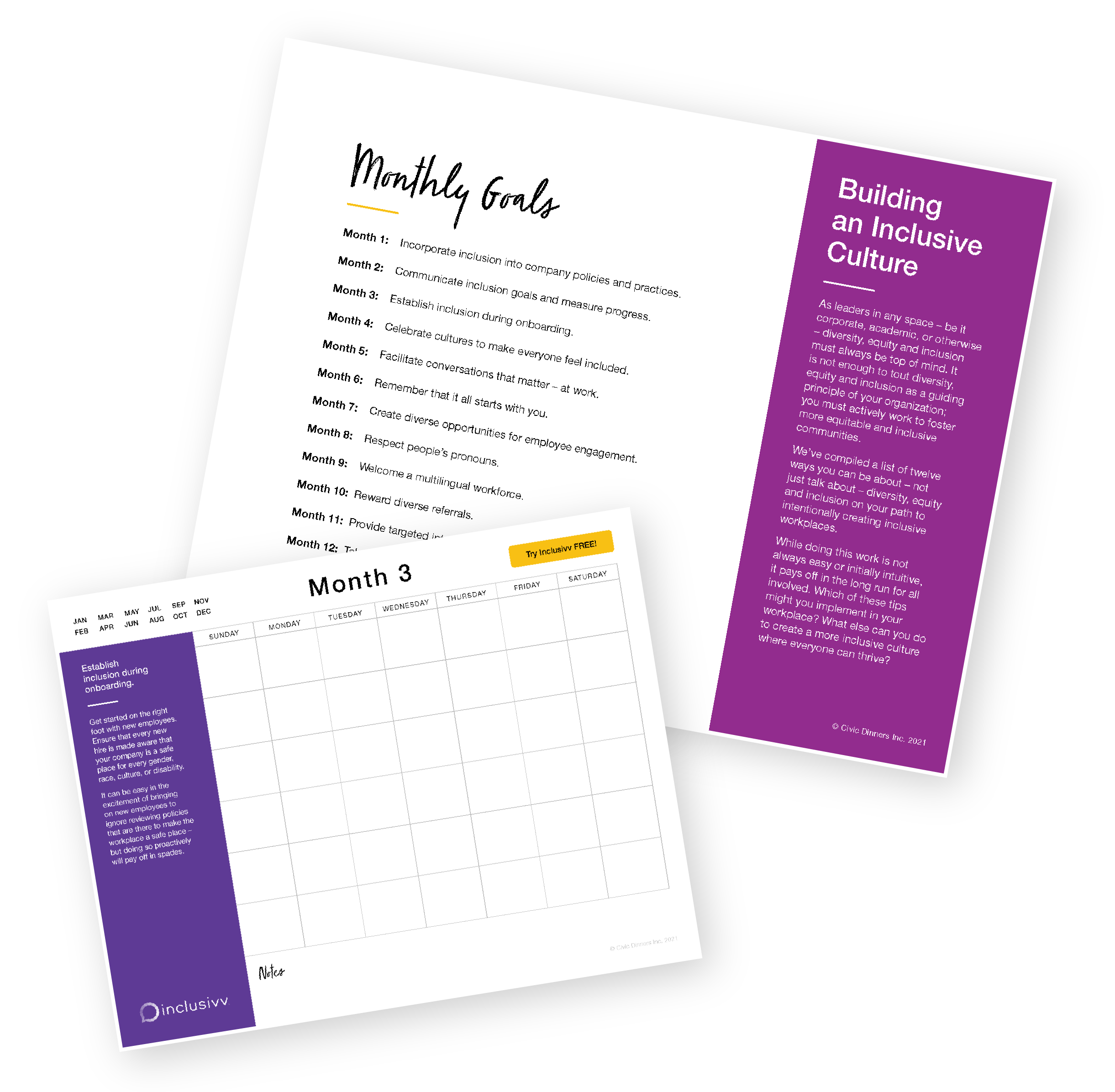In today's workplaces, we are experiencing a unique phenomenon: the convergence of five generations. From Traditionalists to Gen Z, each generation brings their own values, perspectives, and work styles. While this diversity offers incredible opportunities for growth and innovation, it also presents challenges that can hinder our ability to fully harness our potential. One significant challenge that persists is ageism.
What is ageism?
Ageism refers to stereotypes, prejudice, and discrimination based on age. It affects individuals from both older and younger generations, creating barriers to equal opportunities and fair treatment. However, there is growing evidence that companies and individuals are recognizing the importance of age inclusion. By embracing age diversity, organizations can tap into a larger talent pool, foster innovation, and connect with a broader audience across generations.
Understanding Ageism and Its Impact
Ageism has long been a problem in the workplace, with older generations often facing discrimination based on assumptions of reduced ability and adaptability. On the other hand, younger generations are affected as well, as their skills and experiences are sometimes undervalued due to their age.
The root of ageism lies in bias, a natural human tendency to prefer and/or favor one group or thing over another. This bias can influence our decisions and lead to unfair assessments based on age. However, ageism can be overcome through awareness, education, and a commitment to inclusivity.
The Benefits of Age Inclusion
Age inclusion is vital for organizations to thrive in today's diverse workforce. By embracing age diversity, companies can reap numerous benefits:
- Leveraging Experience: Older employees bring a wealth of knowledge, experience, and a proven track record of performance, making them valuable assets to any organization.
- Fresh Perspectives: Younger employees often have exposure to new innovations and non-traditional ideas, contributing to a culture of creativity and adaptability.
- Knowledge Transfer: Specialized skills can be passed down from older employees to younger ones and vice versa, fostering growth and intergenerational mentorship within the organization.
- Reduced Turnover: A workplace that values skills and performance over age creates a sense of loyalty and commitment, reducing turnover and retaining top talent.
- Effective Communication: Age-inclusive organizations can effectively communicate with a diverse range of customers and stakeholders, enhancing their reach and impact.
- Motivation and Collaboration: By embracing intergenerational mentorship, you foster a more collaborative, psychologically safe work environment.
- Diverse Workforce: Age diversity leads to a more robust and innovative workforce, blending new ideas, proven methodologies, and collaborative problem-solving.
Overcoming Ageism: Steps Toward Age Inclusion
To promote age inclusion in the workplace, organizations can take several steps:
1. Training and Awareness
Invest in age inclusion training programs for employees, managers, and leaders. These programs can increase awareness, challenge bias, and promote a culture of inclusivity.
2. Bridging Education and Competencies
Recognize that formal education is just one aspect of competence. Emphasize the value of real-world experience, proven results, and transferable skills when evaluating candidates for positions.
3. Review Marketing and Promotional Material
Ensure that marketing and promotional materials reflect the diverse and age-inclusive nature of the company. Use imagery and language that represent a range of ages and experiences.
4. Embrace a Diverse Hiring Process
Involve individuals of various ages in the hiring process to reduce age bias. Focus on knowledge, skills, and potential rather than years of experience alone.
5. Incorporate Age Inclusion in DEI Policies
Include age as a dimension of diversity and ensure that diversity, equity, and inclusion (DEI) policies explicitly address ageism and promote age inclusion.
6. Foster Collaboration Across Generations
Encourage cross-generational collaboration by intentionally pairing employees from different age groups on projects. This allows for the sharing of diverse perspectives and the blending of skills and experiences.
What are the Next Steps Toward Age Inclusion?
As part of Inclusivv Membership on the Inclusion and Belonging Journey, we hosted an online conversation on Age and Inclusion with our members around the world. The insights and feedback shared by our members highlighted the importance of empathy, understanding, and intentional efforts to bridge generational divides. By fostering open conversations and creating a supportive environment, we can create workplaces where every individual is seen, heard, and celebrated, regardless of their age.
Here’s what our Inclusivv members had to say after the online conversation:
- “We realized we have more similarities across age groups than differences.”
- “I'm a Gen Xer, and when we were moving into the workforce, we were also labeled as the lazy ones who had no respect for authority - it is an old pattern that we need to discard.”
- “People can surprise you - but only if you let them. Be open minded.”
- “We all want a fair chance to achieve; humans experience the same emotions, love, respect, and fear. We must discard harmful stereotypes and biases to provide space for all to achieve.”
- “Generation after generation has looked to the generation after with mixed feelings. Socrates once wrote, “The children now love luxury; they have bad manners, contempt for authority; they show disrespect for elders and love chatter in place of exercise." Lack of understanding across generational divides has been an issue for so long - we have to come to the table with respect for each individual, regardless of age.”
After 90-minutes of meaningful, structured conversation, we asked our members, “What did you learn?” Here’s what some Inclusivv members had to say:
- “Remember that we are all learning, and the best way to understanding is through empathy.”
- “A good way to gather insight from a broad spectrum of people; thoughtful questions that help people connect.”
- “That a commitment to unity, in engaging with diversity of all types, ultimately helps everyone.”
- “It's a lovely way to connect with other folks in a way that has a helpful structure (as an introvert, I value structure when it comes to conversation)."
- “I want to give older and younger generations more respect and not think of the biases from the start. I think reaching out to older generations for mentorship is great, but also I want to try to give advice to older generations without being condescending. I also want to lend my knowledge and experiences to younger generations and try to learn from them.”
- “Being intentional about cross-generational activities to promote understanding and acceptance.”
Want to be in courageous conversations every month that build belonging and inclusion like this one? Join Inclusivv Membership on the Inclusion & Belonging Journey as an individual or team.
A Final Note on Age and Inclusion
Age and inclusion are intertwined concepts that require our attention and commitment. By valuing individuals regardless of their age, we create a workplace that celebrates diversity, empowers employees, and fuels innovation. The benefits of age inclusion are vast, from leveraging experience and fresh perspectives to promoting effective communication and reducing turnover. Overcoming ageism requires training, awareness, and a genuine commitment to inclusivity. Let us strive to create age-inclusive workplaces that celebrate the unique contributions of every generation.
Remember, we all win when we're valued for our skills, experiences, and perspectives, regardless of the year we were born or the generation we belong to.



.png?width=1200&height=628&name=Age%20and%20Inclusion%20in%20the%20Workplace%20Valuing%20Every%20Generation%20(1).png)
